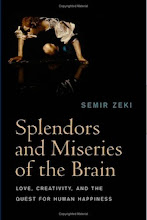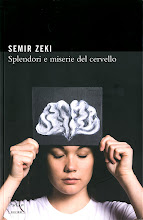The quite wonderful exhibition, Shunga: sex
and pleasure in Japanese art at the
British Museum in London, carries with it a surprising paradox or
contradiction, which no one has so far been able to explain to me adequately.
Japanese culture in general emphasizes the
unstated and the understated, leaving much to the imagination. Yet Shunga art,
which is basically erotic art, is the exact opposite. Here, almost nothing to
do with the genitals is left to the imagination; instead they are given
prominence, the size of the organs more often than not exaggerated beyond
reasonable dimensions.
Yet, in spite of this prominence, most of
the rest of the body is covered up in many, if not most, depictions of sexual encounters; in many it is the genitalia alone that are
exposed. There is of course, also something of the artificial in these works;
couples make love with their clothes on; the hair is usually immaculately
coiffed, in some a lady is having her hair combed while having intercourse
while in others there are spectators, including children, witnessing the scene.
Why would a culture that has traditionally
emphasized the understated produce work that is anything but under-stated? Some
Japanese friends have told me that Shunga is nothing but pornography. I do not
believe it. In spite of the fact that they may have been used as stimulants or
as props for sexual pleasure, these are works of art as well. It is the
brilliant depiction of interiors, the wonderful colour combinations, and the
immaculate detail with which clothes are represented that turns them into
visually pleasurable works. Indeed, it may be said that the genitalia are in
fact often a distraction from the rest of the work, especially the depiction of
the graceful women in the Shunga work of Kitigawa Utamaro. If “art is
fantasy”, as a quote at the exhibition proclaims, then it is those graceful
figures that invite the viewer into a world of fantasy, not the prominently
exposed genitalia. A critic once wrote that the sexual figure in Boticcelli’s Birth of Venus is not the naked lady but
her richly dressed companion to the right, presumably meaning that it is the
latter who draws the viewer into a world of fantasy. Maybe the great masters of
Shunga art were trying to balance the explicitness of their images with depictions that allow a world of
fantasy and imagination to come into play, all in one.
Shunga was apparently not legal in Japan for very
long periods, though tolerated throughout and popular with all levels of society. It is, I
gather, still frowned on in Japan. Indeed, I am told that, in modern-day Japan,
adult movies in hotels often blur the genitalia – in striking contradiction to
Shunga art of earlier times. And there is the contradiction: explicit
pornographic films that blur the genitalia on the one hand (perhaps in keeping
with the understated in Japanese culture), and great art that is implicit in
everything but the genitalia (quite unlike the understated characteristic of
Japanese culture).









 Contact us
Contact us
No comments:
Post a Comment